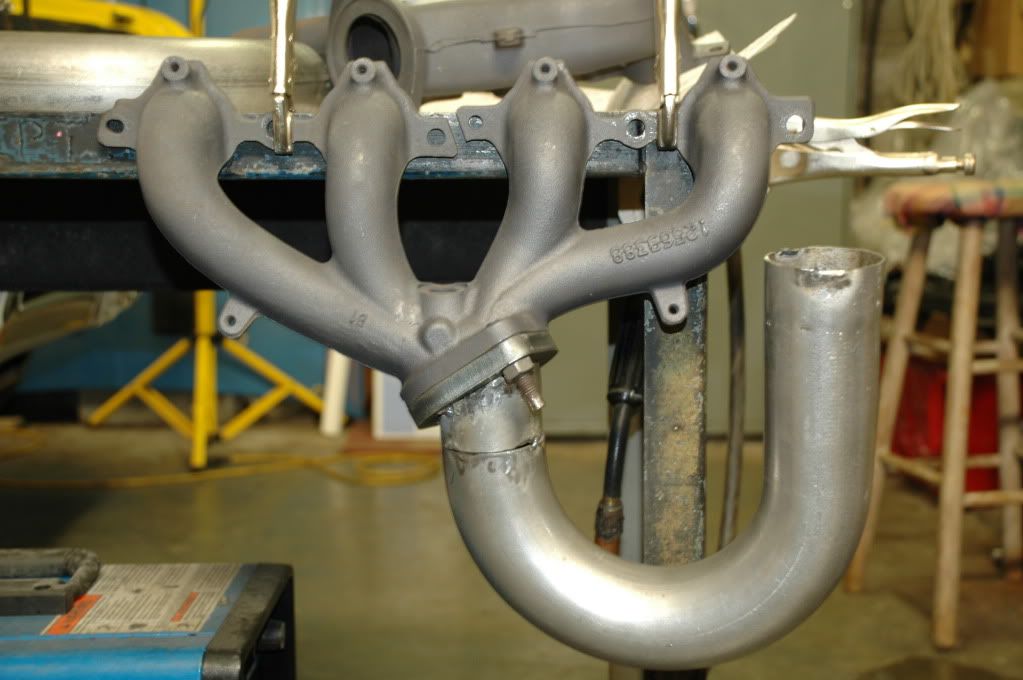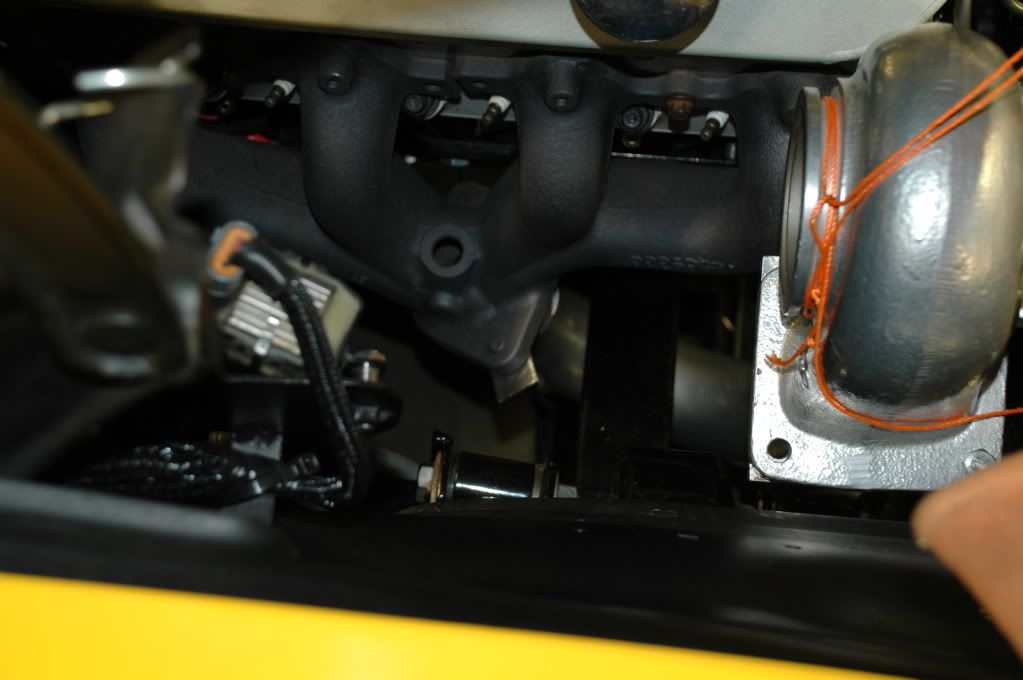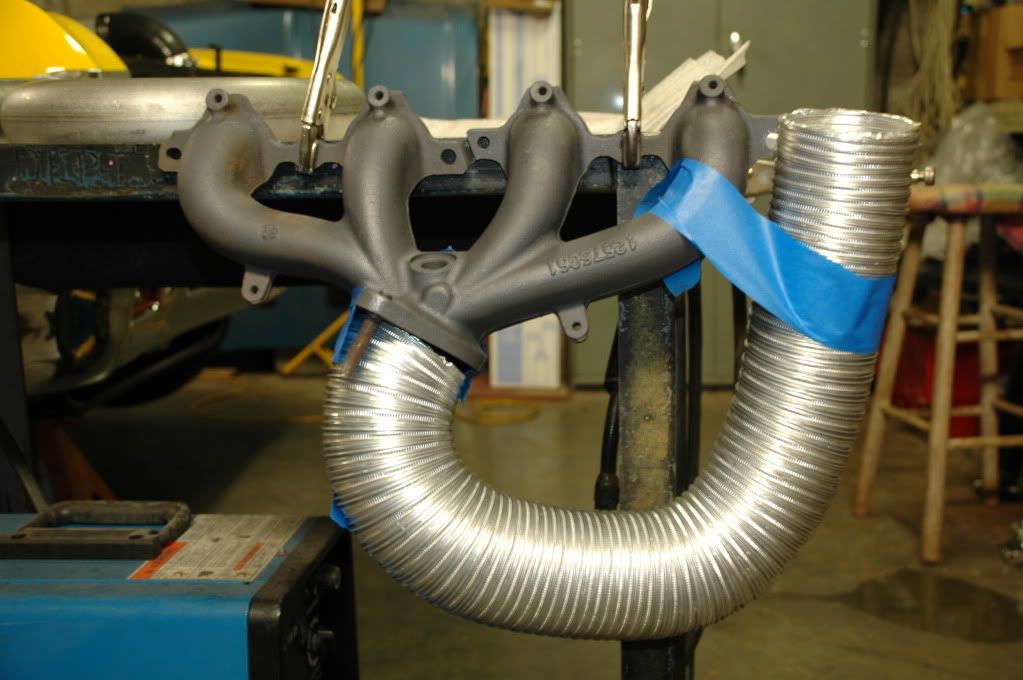Fabrication question - strength of "saddle-on" flange connection
#1
I am working on the hot side from my C6 manifolds to the T4 flanges. Just for a quick background, car is a '69 Nova with a Martz front subframe, 408 iron block engine, and I'll be installing two Turbonetics GTK-650s.
My 2½" hot-side piping works out real simple by running a 180° mandrel bend under the engine mount pedestal and extending it 4" up into the T4 flange. The only problem area is that the C6 manifolds angle the 2-bolt flange roughly 25° forward - getting too close to my engine mounts. I can resolve the geometry by miter cutting the pipe right as it comes off the 2-bolt flange. But that prevents me from slipping the pipe into the flange for a nice strong welded connection. Will a flush fit "saddle-on" welded connection be adequate here? I know there is some flow disruption with a miter cut, but I can contour the flange to help smooth it out some. By the way, I will be providing a support to carry the weight of the turbo.
Here is a picture of my mock up to help explain.

and a couple picture installed on the car:


The other option is to swap manifolds so they are angled towards the rear. It would work out on the passenger side, but the steering linkage is a problem on the driver's side. Here is a mock up with them facing back - I am still working on the steering linkage to see if this is even a possibility.

But back to the original question - is the mitered pipe saddle-on connection a viable weld connection?
My 2½" hot-side piping works out real simple by running a 180° mandrel bend under the engine mount pedestal and extending it 4" up into the T4 flange. The only problem area is that the C6 manifolds angle the 2-bolt flange roughly 25° forward - getting too close to my engine mounts. I can resolve the geometry by miter cutting the pipe right as it comes off the 2-bolt flange. But that prevents me from slipping the pipe into the flange for a nice strong welded connection. Will a flush fit "saddle-on" welded connection be adequate here? I know there is some flow disruption with a miter cut, but I can contour the flange to help smooth it out some. By the way, I will be providing a support to carry the weight of the turbo.
Here is a picture of my mock up to help explain.

and a couple picture installed on the car:


The other option is to swap manifolds so they are angled towards the rear. It would work out on the passenger side, but the steering linkage is a problem on the driver's side. Here is a mock up with them facing back - I am still working on the steering linkage to see if this is even a possibility.

But back to the original question - is the mitered pipe saddle-on connection a viable weld connection?
#2
Teching In
Join Date: Apr 2006
Location: Oak creek, WI
Posts: 25
Likes: 0
Received 0 Likes
on
0 Posts
id say your going to have to support the turbo. just having it bolted to that manifold will most likely be too heavy and break off near the weld at the flange(the area of your concern) if you were using a thick walled SS maybe you could get away with it if the downpipe of the turbo added some strength/rigdity to the design, but either way if its a street car, with bumps and such in the road, it will crack. I would add some kind of support to the turbo to be safe and not have to worry about!
either way good luck and post up if you need any other input!
either way good luck and post up if you need any other input!
#3
One other note is that I am using 2½" 16 gauge steel tubing with .065" wall thickness. I also picked up some 14 gauge straight tubing that I could use for the miter section for a little more wall thickness. At work I have access to some industrial welders who can help me finish weld it out.





